Rosehill Cemetery in Chicago opened in 1859, just in time to receive war dead in the days before dog tags.
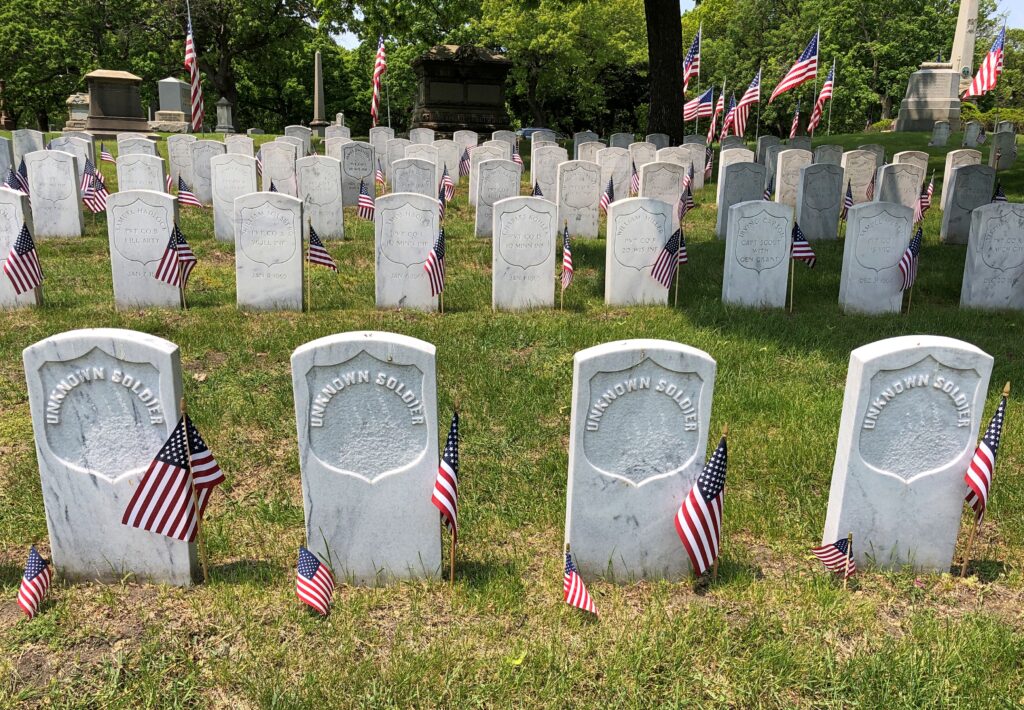
Still, most of the stones had names and, for now, flags that must have been placed for Memorial Day, which was the weekend before I took my stroll at Rosehill.

The first hospital steward I’ve ever seen among stones of this kind. That couldn’t have been an easy or pleasant job.
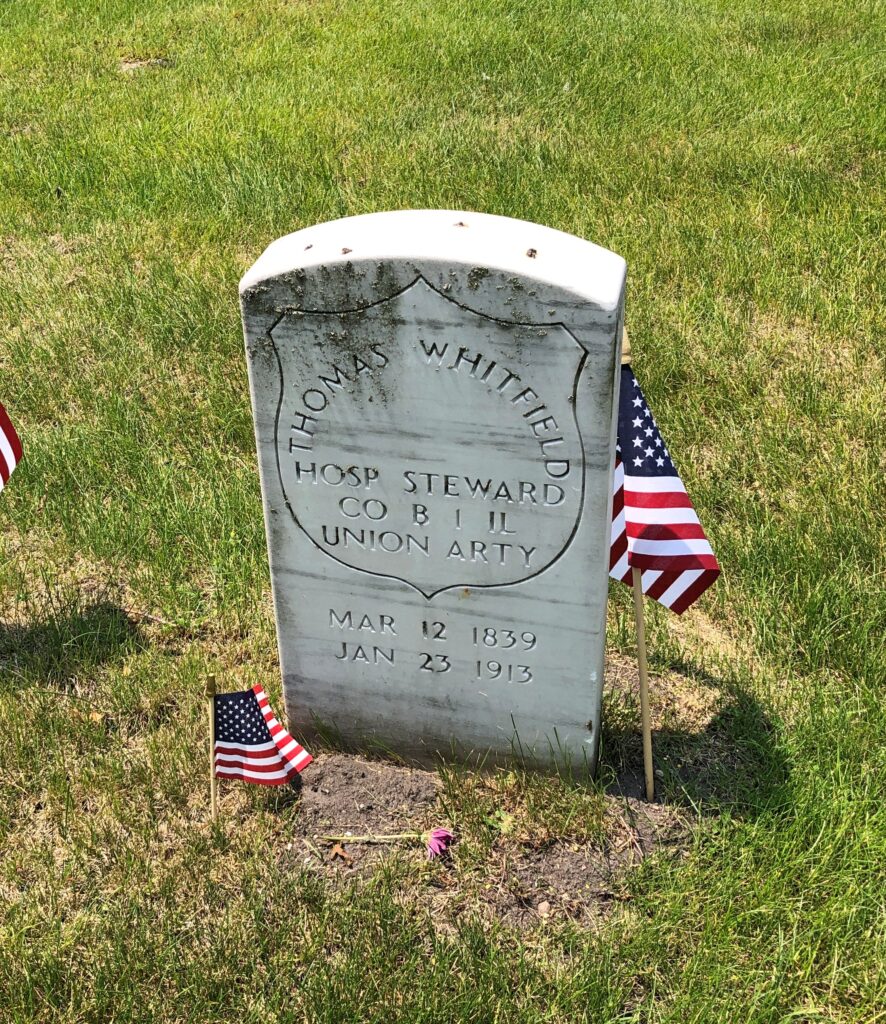
The stones looked fairly new. Turns out they are replacements for the originals.

Often pointed-top stones designate Confederates, but not in this case. Died for the Union at Shiloh, but not buried in Chicago.

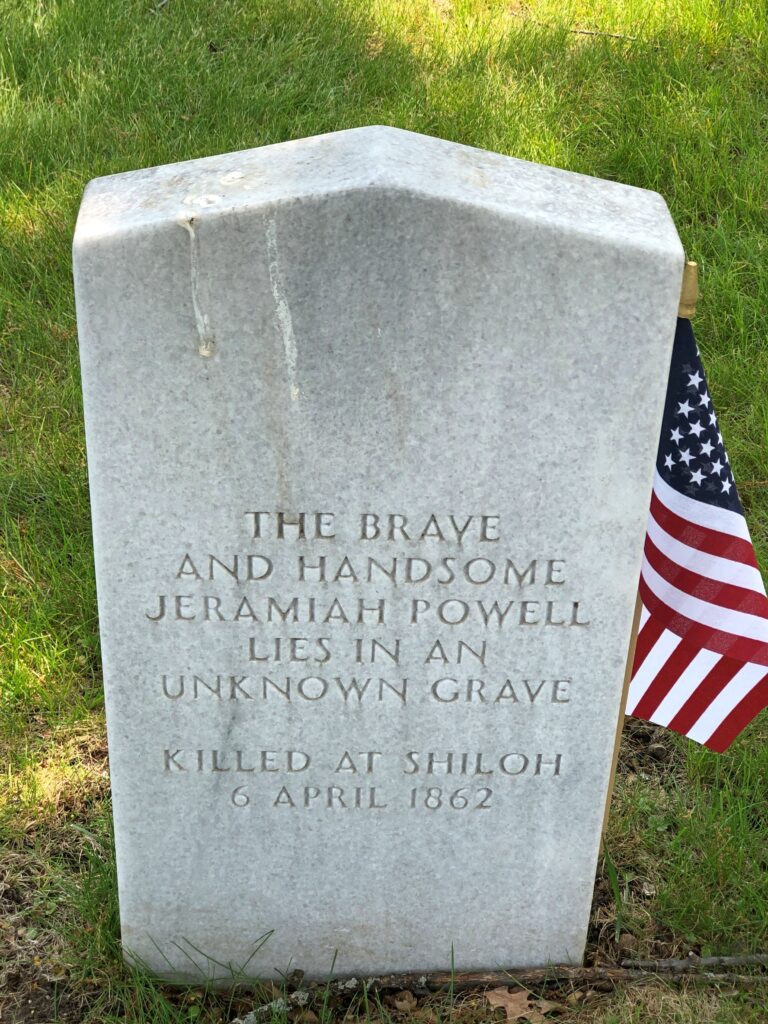
A draped obelisk marking the grave of Gen. Thomas E.G. Ransom (d. 1864).
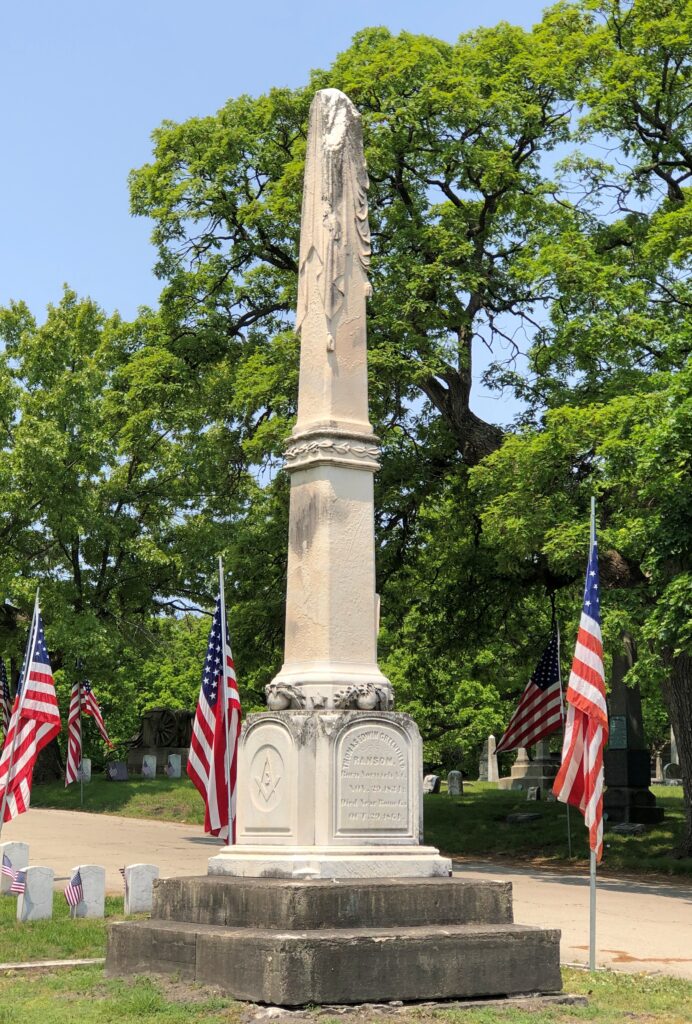

The Civil War was a hands-on conflict even for high-ranking officers, who thus died or were wounded in some numbers. They also shared the risk of disease, and in fact dysentery felled Gen. Ransom, though he had been wounded more than once in combat.
The war dead are clustered near the cemetery’s grand entrance. This memorial says Our Heroes and was dedicated on Decoration Day 1870, with the bronze atop and the bas-relief panels on the sides by noted sculptor Leonard W. Volk (d. 1895). He also did the tomb of Stephen Douglas.
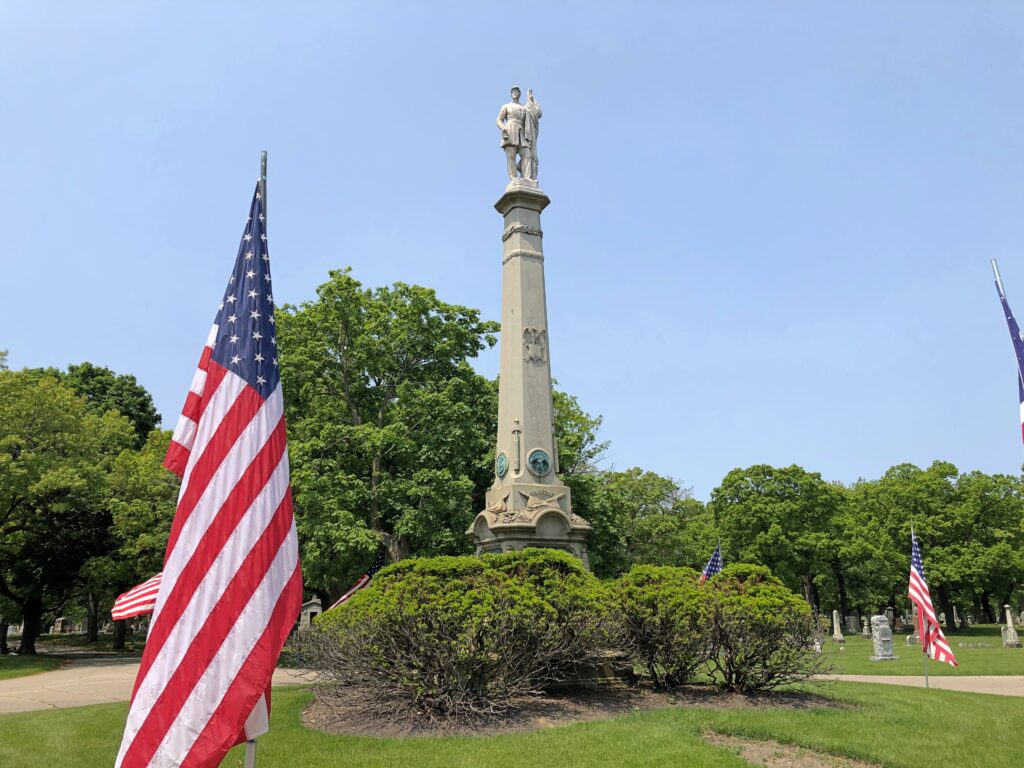
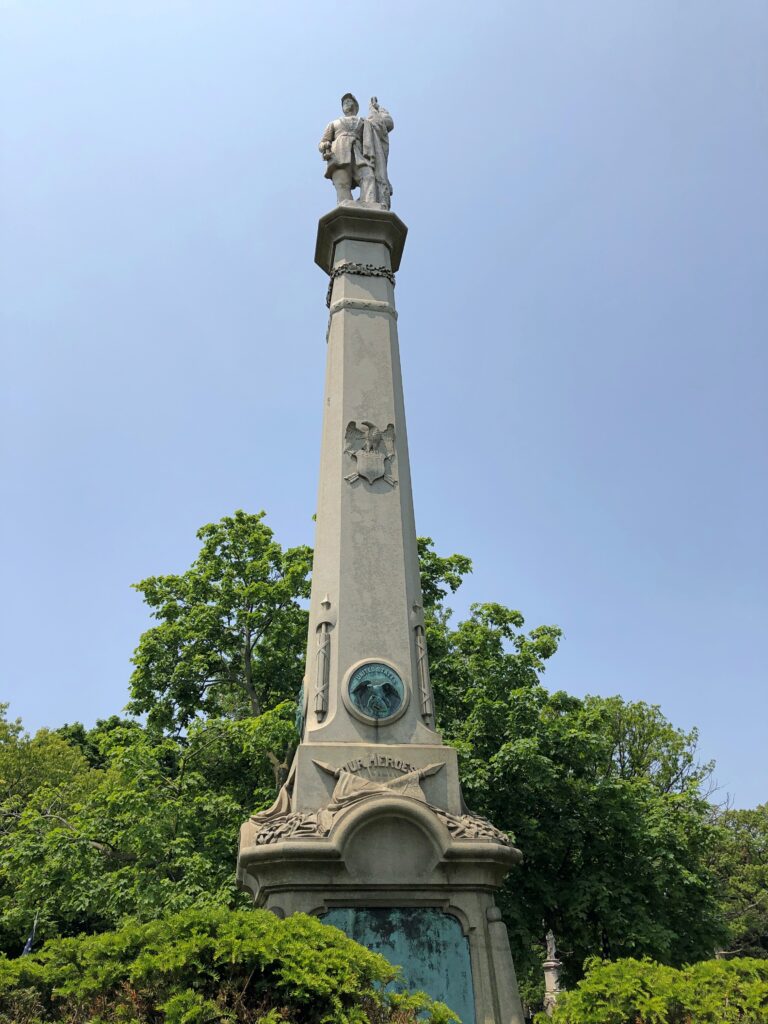
“An immense train, composed of twenty-three cars, was found necessary to transport the people who desired to attend the ceremonies,” the Chicago Tribune reported the next day. “These, added to the number which had taken the forenoon train, as well as those who had proceeded to the spot in carriages, swelled the attendance to over five thousand persons, there being about an equal number of ladies and gentlemen. Arrived at Rosehill the crowds formed into a procession and, headed by Nevans & Dean’s full band, marched to the music of a dirge to the vicinity of the monuments, where a few moments were occupied in the inspection of the structures.”
The report mentioned monuments, plural, and besides Our Heroes, also dedicated that day was a memorial to the Chicago Board of Trade Battery, an artillery battery, noting the many battles it participated in.
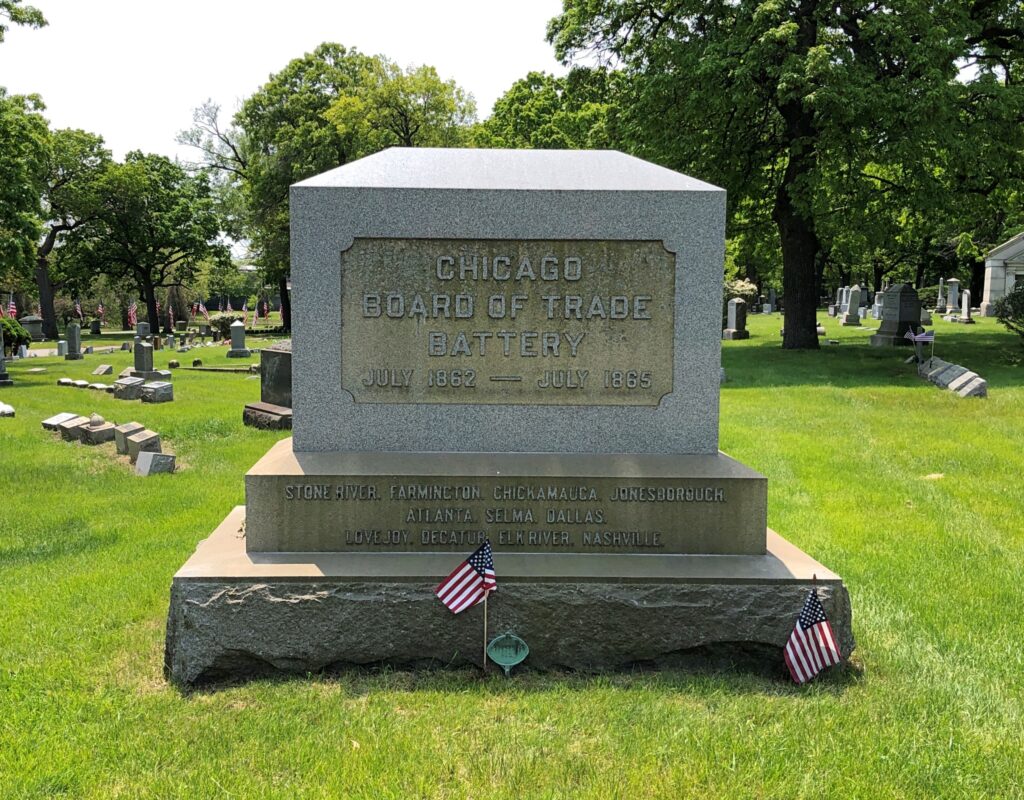
More artillery.


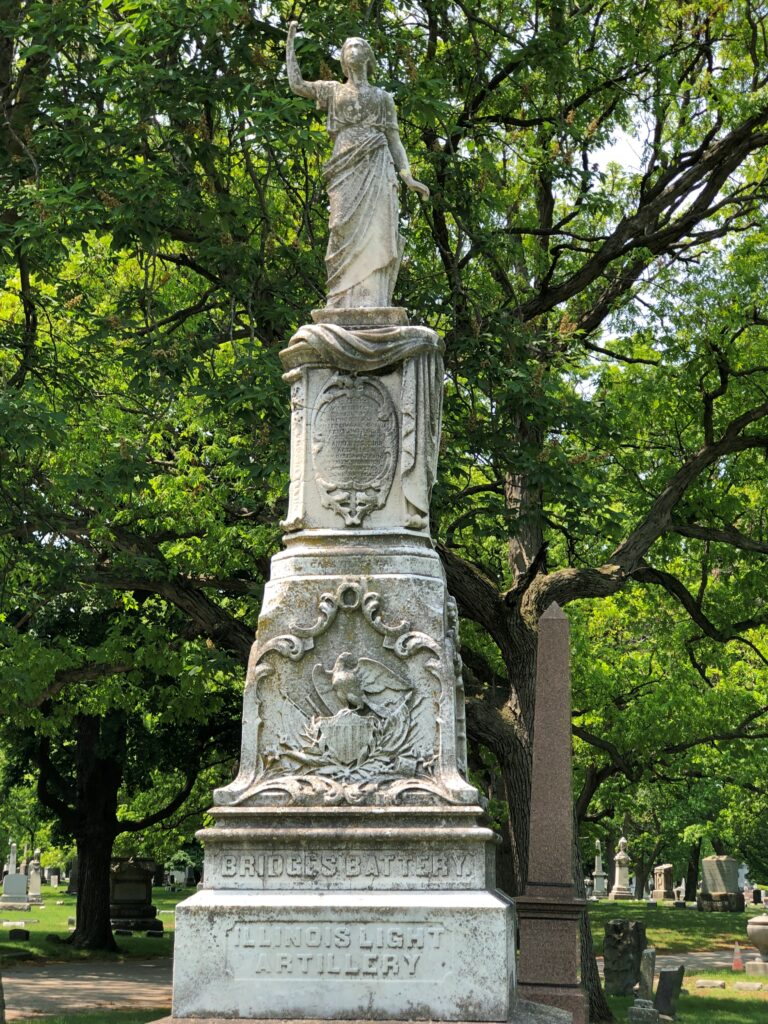
Bridges’ Battery, Illinois Light Artillery, is ringed by what look to be captured — and repurposed — cannons.
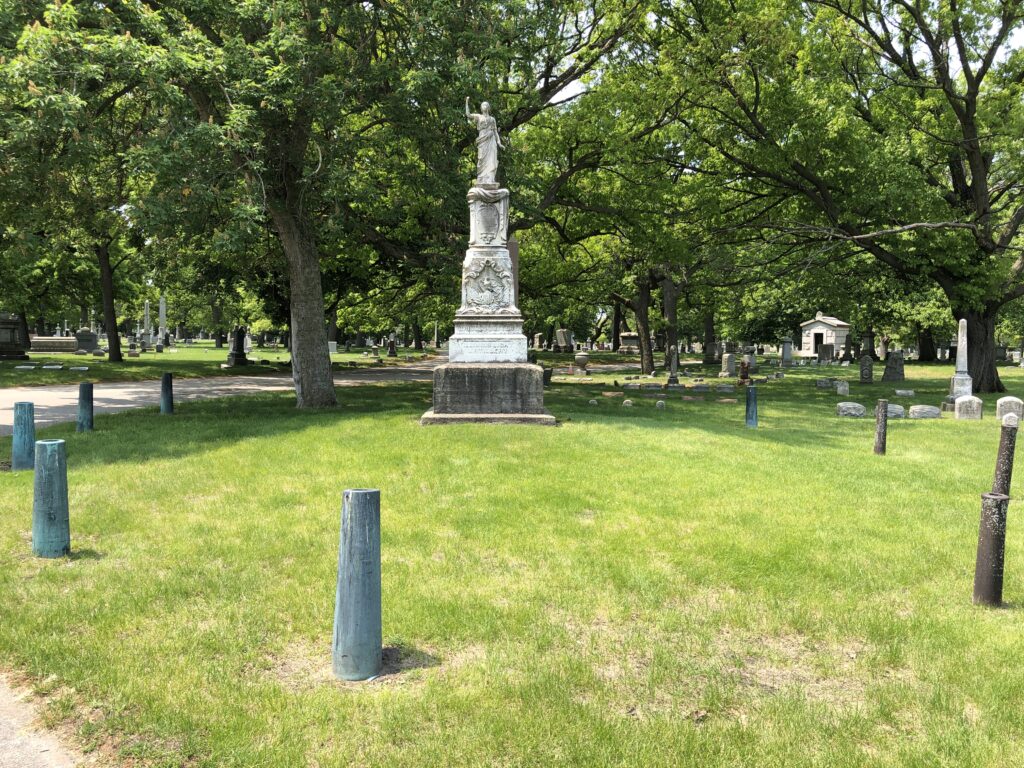
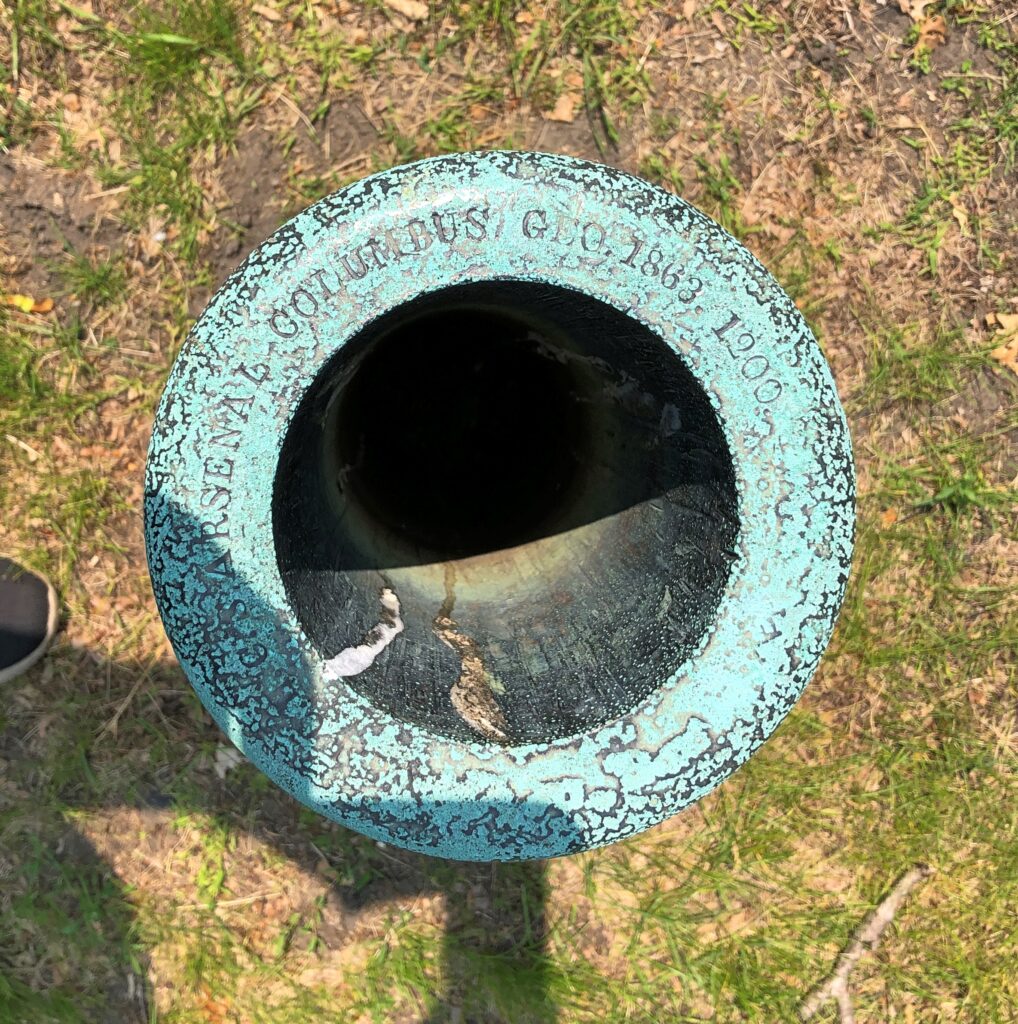
The cemetery office had photocopied map-guides to the grounds, and that inspired me to go look for the Rock of Chickamauga, which isn’t that close to most of the rest of the Union war dead. Along the way is a memorial to Chicago volunteer firemen. While not directly related to the war, it’s from the same time, 1864.

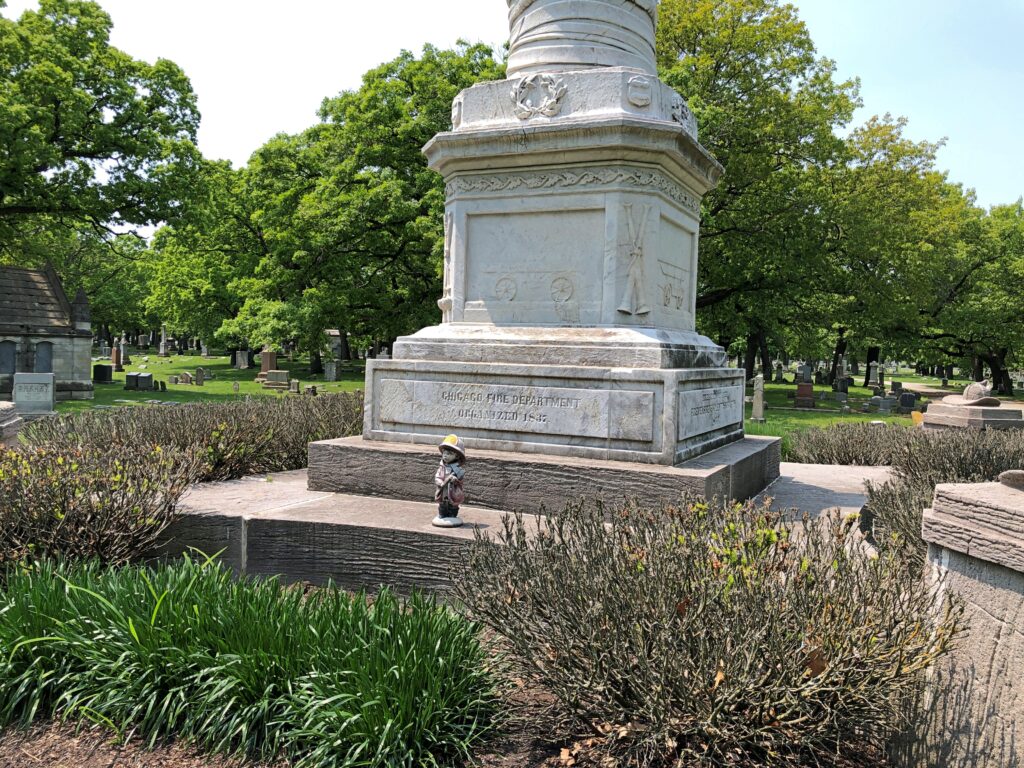
Gen. George Thomas (d. 1870), the Rock of Chickamauga, isn’t buried at Rosehill, but rather in upstate New York. Still, he’s honored in Chicago.

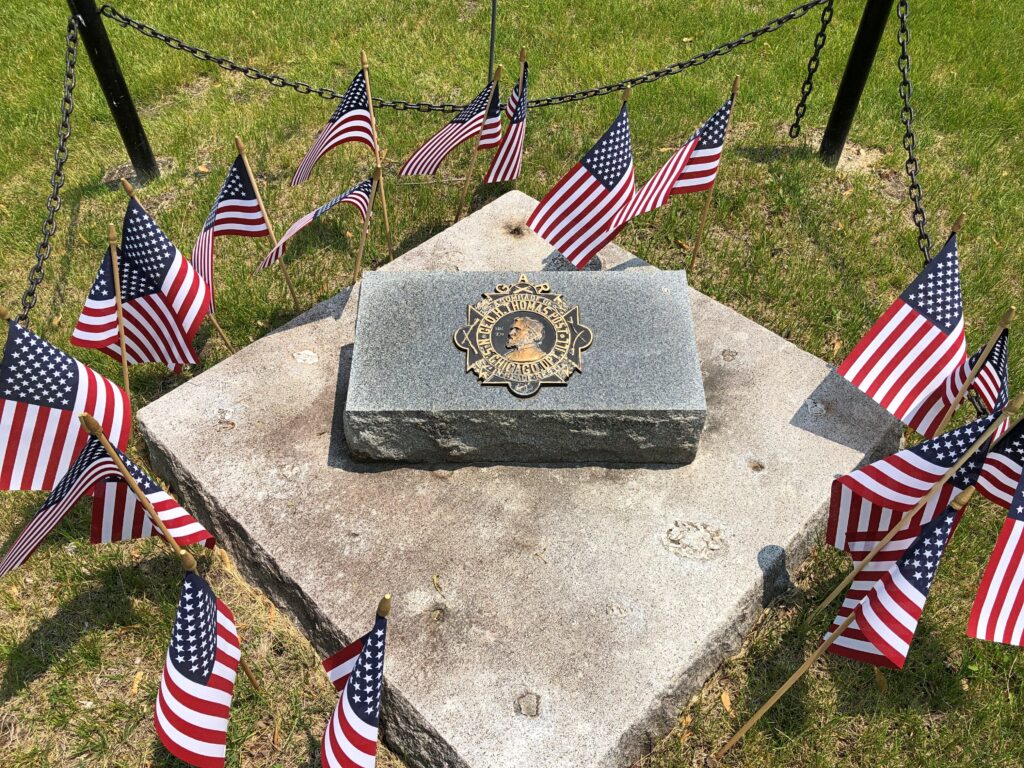
A Chicago post of the GAR took his name and in 1894, honored him by erecting a 12-ton boulder taken from the cliffs at Chickamauga National Battlefield. As marked on the boulder, it was rededicated in 1994.
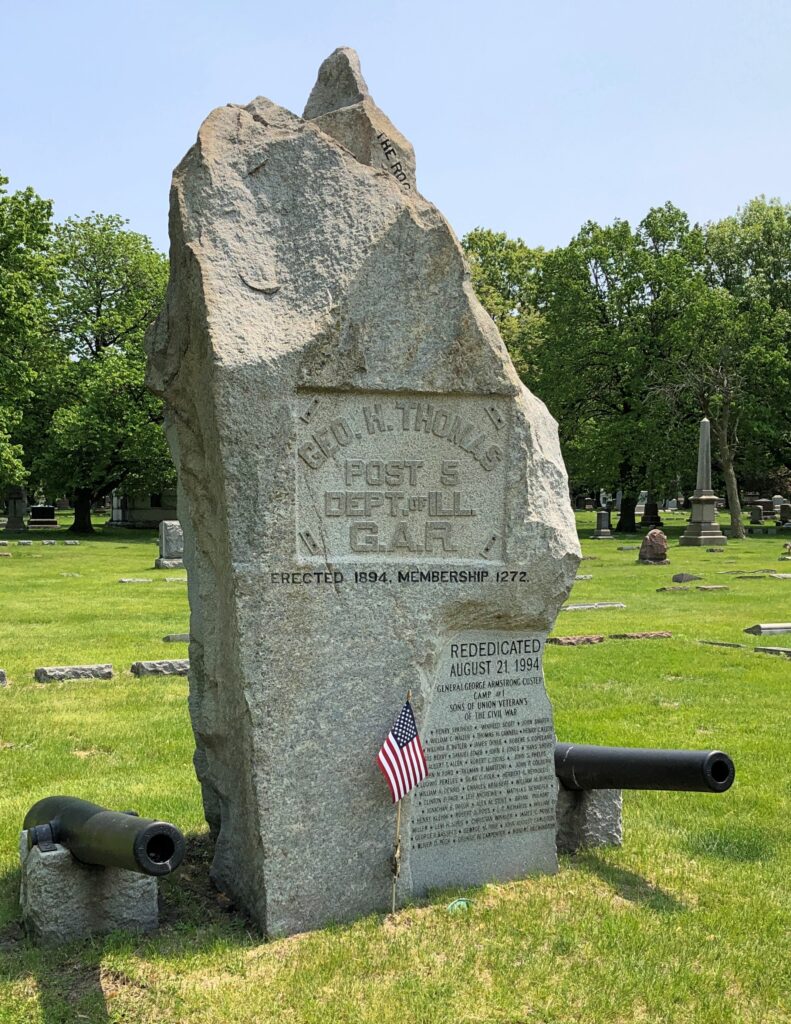
So while the metaphorical Rock of Chickamauga isn’t at Rosehill, a literal rock of Chickamauga is.